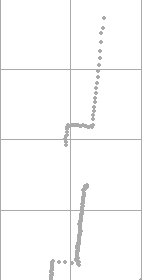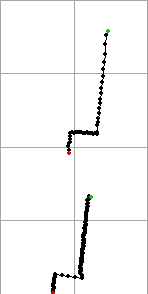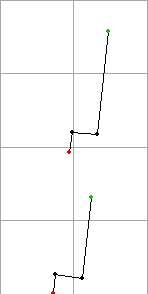


An illustration of the process is given as a small animation.
The resulting, simplified polylines serve as basis objects in our system.
| All data is shown with a grid of size 1 meter. Click on the images to view a larger one. The data has been recorded by Dr.-Ing. Thomas Röfer at the University of Bremen using a SICK LMS200 laser. | |
 |
LRF data is acquired, mapping scan points to the Euclidean plane in a local coordinate system. |
 |
The scan is split into parts; object transitions are hypothesized wherever two consecutive scan parts are farer apart than 20cm. Each resulting part is represented by a polygonal line (shortly: polyline) comprising all scan points. |
 |
Polylines obtained are simplified to cancel out noise and to make the data more compact, thus, allowing for efficiency in subsequent processing. Simplification is realized by means of Discrete Curve Evolution, a context-sensitive process of vertex deletion that eliminates noise while preserving important shape features. An illustration of the process is given as a small animation. The resulting, simplified polylines serve as basis objects in our system. |